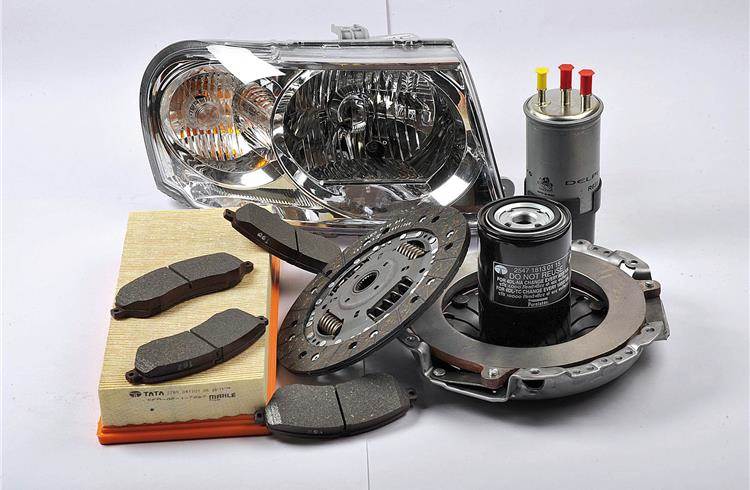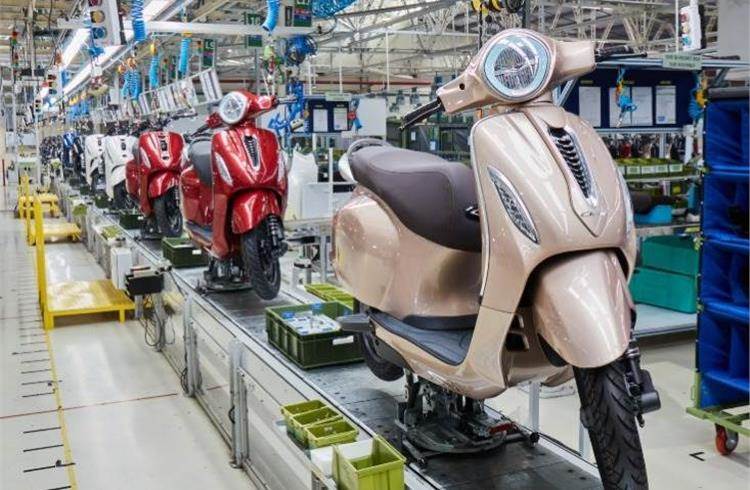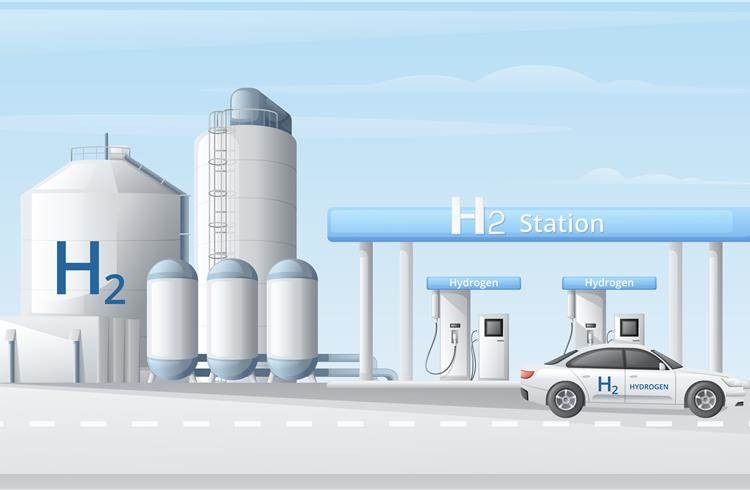Expectations will be running high from the upcoming Budget with the automotive industry unitedly expecting a harmonisation of the goods and services tax (GST) on various automotive components, and the move could give a huge demand-generation push to the sector. The industry body – Automotive Components Manufacturers Association of India (ACMA) – has been voicing its demand for a very long time to rationalise GST on components in order to give a fillip to the industry. “Though it is not strictly a matter of the Budget, our key request to the government is to bring a uniform 18 percent GST rate across components,” said Vinnie Mehta, director general, ACMA.
“Having said that, we are also thankful to the government for the allocations of FAME and PLI that are in the interest of the auto industry,” Mehta adds.
According to Akash Minda, executive director, Minda Corporation, “We are looking forward to a Budget that supports both the manufacturing sector and the consumer. The transition of the sector towards electric vehicles needs special focus. To build an upward tick within the EV market, government schemes should strengthen the indigenous EV industry. The focus must be on providing incentives and schemes to aggressively build a robust ecosystem that supports the infrastructure, supply chains and material required for growth. This will ensure India’s participation in contributing to the EV revolution in India as well across global markets.
“We urge the government to consider incentivising the journey of ‘electronification’ by rationalising the GST rate for auto components. While EVs are priced with a 5% GST, component manufacturers are currently mandated to pay GST of 18% to 28%. We are hoping for a tax standardisation that will help the component manufacturers scale up and strengthen to provide parts and consistent quality and reduce litigation.”
“Of the 219 various tariff lines, the auto industry has 40 percent of the tariffs that are over 18 percent. There is an urgent need to harmonise GST to below 18 percent for all components,” said Harshvardhan Sharma, head, Auto Retail Consulting Practice, Nomura.
Hemal Thakkar, director, CRISIL Market Intelligence and Analytics, also emphasised the need for a uniform GST for components. “The production linked incentive (PLI) scheme, among other measures, supports advancement in transmission and electronic systems. However, the dual GST rate – 18 percent and 28 percent – on automotive components encourages grey market distribution in the aftermarket space. “This is a safety hazard as well as an incentive for the informal economy that leads to a loss of GST revenue. So, it is best to move to 18 percent for all components,” said Thakkar.

The automotive sector, especially the ICE component makers, have set high hopes from the Budget 2023-24, and expect it to bring transformations and relaxations for the industry. “The government should consider introducing policies and schemes to bolster small industries and businesses. This would have a positive impact on the prices, as bridging the supply chain gap would restore balance in the market and curb the rising prices” said Lalit Khetan, CFO, Ramkrishna Forgings.
2W OEMs seek demand-side measures The ICE two-wheeler industry has been facing a lot of stress at the belly of the market in the 100-110cc vehicle category, where the inflationary pressures have hit the rural economy hard. Rakesh Sharma, the executive director, Bajaj Auto, hopes the finance minister will support the rural economy. According to Sharma, “Measures that increase disposable incomes and give more purchasing power to the rural economy will translate into higher sales of entry-level bikes and scooters.”
The ICE two-wheeler industry has been facing a lot of stress at the belly of the market in the 100-110cc vehicle category, where the inflationary pressures have hit the rural economy hard. Rakesh Sharma, the executive director, Bajaj Auto, hopes the finance minister will support the rural economy. According to Sharma, “Measures that increase disposable incomes and give more purchasing power to the rural economy will translate into higher sales of entry-level bikes and scooters.”
Kotak Securities’ vice president Arun Agarwal too is mirroring the view of two-wheeler OEMs. He says that the Budget should take concrete steps to support rural income which will indirectly benefit the entry-level two-wheeler as well as the tractor segments which are under stress.
EV players request for policy support
Meanwhile, the electric two- and three-wheeler manufacturers unanimously agree that for building a strong EV ecosystem, government support is critical for the Indian electric two- and three-wheeler industry.
Aditya Munjal, director, Hero Cycles, says that with the upcoming Budget 2023-24, the company is hoping for the inclusion of cycles and e-cycles in the existing schemes and policies such as PLI and FAME-II, that would help transform the bicycle industry in the country.
In the two-wheeler space, Matter Energy founder and CEO Mohal Lalabhai believes that the PLI scheme can be made more inclusive to include start-ups. According to Lalabhai, “The ex-factory price for electric two-wheelers should be raised from the current Rs 150,000 ex-factory to Rs 200,000 to support advanced technology development for scooters and motorcycles in the country.”
“Reduction in customs duty on the import of lithium-ion cells will reduce the overall upfront costs of battery production and significantly bring down the cost of acquisition for electric vehicles in India,” Lalabhai added.
Another upcoming two-wheeler manufacturing small and medium enterprise (SME) player Virtual Forest is creating capacities for manufacturing motor controllers for electric two- and three-wheelers. According to the company’s founder and CEO, Omer Basith, “We hope that the SME industry too can benefit from extending the PLI in cell manufacturing to SMEs that are investing in the component space.”
In the three-wheelers category, Uday Narang, chairman, Omega Seiki Mobility, says that there is a need for standardisation of battery voltages and various form factors. “The finance minister should consider an extension of the FAME-II subsidy for retrofitting ICE vehicles to electric,” he said.
Need to step up EV financing
Narang also says that improving finance options by giving priority-sector status for EV financing and correcting the GST inverted duty structure is expected from the finance minister.
Dr. Amitabh Saran Founder and CEO of Altigreen said commercial banks need to be pushed to step in with financing support and reduce the interest rates. “We also look forward to the rationalisation of GST rates. Currently, 5 percent GST is levied on EV sales but OEMs pay 28 percent GST for spare parts. Bringing them under the five percent bracket can lead to a price reduction and an uptick in EV adoption,” Saran pointed out.
Representatives of e-rickshaw makers who have been at the heart of growth for India’s EV industry are also batting that the government needs to focus on lowering interest rates for EV financing and standardising residual battery-value calculation. “We need to revisit EV financing issues and address the challenges regarding the cost of finance,” says Nitin Kapoor, MD and CEO, Saera Electric.
Kapoor also said that the government must focus on creating awareness about the vehicle scrappage policy to encourage the phasing out of end-of-life vehicles and drive EV sales.
A case for PLIs for green hydrogen and electrolysers
Vehicle OEMs are also of the view that green hydrogen and electrolysers should be added to the PLI schemes as zero-emission technologies need to be powertrain agnostic.
“Electrolysers and Hydrogen 2ICE engines are new technologies that should be added to the Auto PLI scheme and government support to the R&D community through incentives would be appreciated by the industry,” said Rajendra Petkar, CTO of Tata Motors and President, ARAI. Petkar voiced his thoughts in an address at a recent ARAI (automotive research association of India) event in Pune.
Meanwhile, passenger vehicle majors including Maruti Suzuki and Toyota Kirloskar who have taken big bets on hybrids are looking to the government to provide them relief in the form of reduced GST rates and seeking parity with EVs. Hybrids attract peak duties of 28 percent and 43 percent, compared to 5 percent GST implementation on EVs.
Boosting the EV ecosystem, rationalising duties
Those in the business of providing charging infrastructure believe there is a case for a reduction in the rates that consumers are charged. Some also hope for incentives in the budget. Kartikey Hariyani, founder and MD, Charge Zone, says, “Faster tax depreciation for electric vehicles and charging infrastructure will ensure that the charging industry benefits. Also, the 18 percent GST for customers can be reduced.”
“One of the key expectations from the Budget is reduction in the GST rate, from 28% to 18%. It will greatly support the home-grown players to invest in newer technologies for enhanced mobility offerings, even at the global level,” says Sanjeev Vasdev, managing director of Pune-based Flash Electronics.
In the battery material and recycling space there is a demand from the industry that PLI should be extended beyond the current ACC structure. Rajat Verma, founder and CEO, Lohum Cleantech, said, “The time is now to promote battery recycling to accelerate this shift and magnify the industry with measurable rewards.”
Some of the other players in the system including companies in the battery swapping space are of the view battery swapping service is at 18% GST and must be aligned with EVs at 5 percent.
Ankit Mittal of battery-swapping firm Sheru says that with demand for EV components going up and various EV component manufacturers increasing prices, the government needs to extend PLI on Advanced Chemistry Cell (ACC), to give a fillip to the manufacturing of electronic components for EVs in India.
The industry is hopeful that the finance minister will reveal a growth-oriented Budget – one that accelerates demand for vehicles, thereby helping the entire ecosystem – in her speech on February 1, when all eyes will be glued towards measures that give the automotive sector a shot in its arm.
